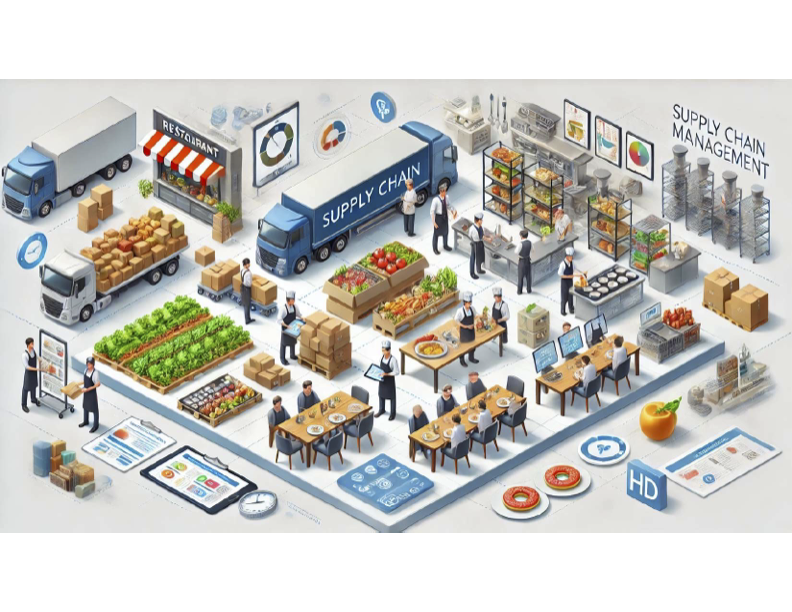Introduction
Supply chain management (SCM) is the backbone of any restaurant operation, ensuring that ingredients and supplies arrive on time, in the right quantities, and at the best possible price. A well-managed supply chain helps restaurants maintain food quality, reduce waste, and control costs—all crucial factors for success in the competitive food industry.
The Importance of Supply Chain Management in Restaurants
A restaurant’s supply chain encompasses every step in the procurement process, from sourcing raw ingredients to delivering the final dish to the customer. An effective supply chain ensures:
-
Consistent Food Quality – Ensuring that ingredients meet the restaurant's quality standards and comply with safety regulations.
-
Cost Efficiency – Reducing waste and optimizing purchasing decisions to maximize profit margins.
-
Inventory Control – Preventing shortages and overstocking by managing inventory levels effectively.
-
Supplier Relationships – Establishing strong relationships with reliable vendors for better pricing, reliability, and consistency.
-
Sustainability – Sourcing responsibly to reduce environmental impact and appeal to eco-conscious consumers.
Key Components of Restaurant Supply Chain Management
-
Sourcing and Procurement
-
Selecting high-quality suppliers and negotiating favorable contracts.
-
Evaluating local versus global sourcing options based on cost, sustainability, and availability.
-
-
Inventory Management
-
Using inventory tracking systems to monitor stock levels and prevent shortages or excess waste.
-
Implementing the FIFO (First In, First Out) method to minimize spoilage.
-
-
Logistics and Distribution
-
Coordinating with distributors to ensure timely deliveries and maintain stock levels.
-
Managing transportation and storage costs to optimize efficiency.
-
-
Technology Integration
-
Utilizing supply chain management software to automate ordering, tracking, and forecasting.
-
Leveraging real-time data analytics for better decision-making.
-
-
Sustainability and Ethical Sourcing
-
Partnering with suppliers who use sustainable farming and ethical labor practices.
-
Reducing packaging waste and optimizing transportation to lower the carbon footprint.
-
Challenges in Restaurant Supply Chain Management
Despite its importance, managing a restaurant’s supply chain comes with challenges, including:
-
Supply Chain Disruptions – Unexpected events such as natural disasters, pandemics, or political instability can impact supply availability.
-
Rising Costs – Fluctuations in food prices, fuel, and labor can strain budgets.
-
Supplier Reliability Issues – Dependence on external vendors may lead to delays or inconsistencies in product quality.
-
Regulatory Compliance – Navigating food safety laws and health regulations requires vigilance and adaptability.
Best Practices for an Optimized Supply Chain
-
Establish a Diversified Supplier Network – Avoid reliance on a single supplier to reduce risks.
-
Implement Data-Driven Forecasting – Use historical sales data to predict demand and adjust procurement strategies.
-
Regularly Audit Suppliers – Conduct routine checks to ensure compliance with quality and safety standards.
-
Invest in Technology – Adopt digital tools for real-time inventory tracking and supply chain transparency.
-
Train Staff on Best Practices – Educate employees on inventory management and waste reduction techniques.
Conclusion
Effective supply chain management is crucial for a restaurant’s success, ensuring smooth operations, cost control, and high-quality service. By leveraging technology, maintaining strong supplier relationships, and adopting sustainable practices, restaurants can optimize their supply chain and stay competitive in an ever-evolving industry. Investing in a robust SCM strategy today will pay dividends in efficiency, profitability, and customer satisfaction for years to come.

